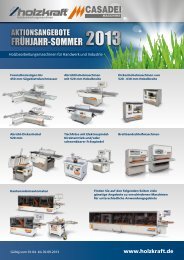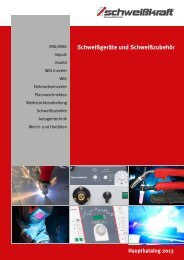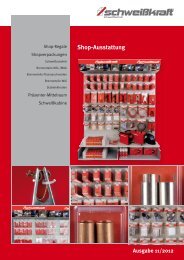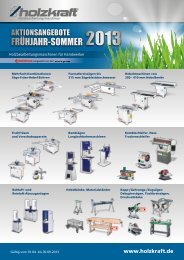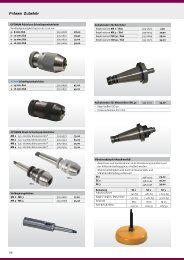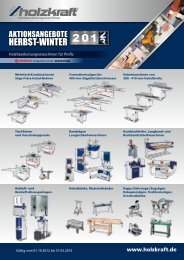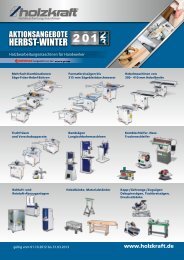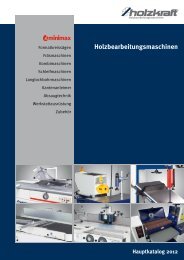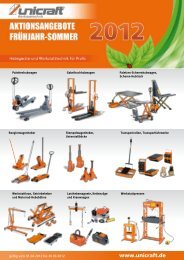Compressors / compressed air - Aircraft
Compressors / compressed air - Aircraft
Compressors / compressed air - Aircraft
Create successful ePaper yourself
Turn your PDF publications into a flip-book with our unique Google optimized e-Paper software.
Advantages of the ROTAL technique New<br />
AIRCRAFT PREMIUM - the energy-saving compressors working with highest efficiency!<br />
Suitable for continuous operation due to patented Rotal technique<br />
· Revolutionary, patented compressor technology<br />
(Rotal technique)<br />
· HHigh degree of efficiency Efficiency<br />
obtains more efficient delivery quantities<br />
at the same engine performance<br />
· Energy-saving: at the same performance,<br />
less power consumption;<br />
comparable with A++<br />
· With powerful industrial motor - designed for<br />
continuous operation<br />
· Very low vibrations and low wear, suitable for<br />
continuous operation<br />
· optimised forced lubrication (patented)<br />
also in inclined position<br />
· other patents for valve plate and control valve<br />
· Very high performance from 230 volts<br />
· With minimum oil consumption<br />
· Switch IP 55 (protected against dust<br />
and jets of water)<br />
· Low maintenance<br />
(about 1250 hours maintenance interval)<br />
· User-friendly, easily accessible<br />
· Low operating costs<br />
· Large fan to provide low working temperature<br />
· Highest processing quality and severe quality<br />
controls for long service life, even for continuous<br />
operation<br />
The advantages of the PREMIUM-Rotal compressors:<br />
66<br />
1<br />
2<br />
3<br />
4<br />
Efficient Rotal technique<br />
5<br />
Energy saving by converting the rotating drive movement in<br />
a linear movement of the piston<br />
· A purely linear movement of the piston is attained due to<br />
the patented innovative planetary drive<br />
· In this way, considerably less friction forces develop<br />
· Up to 25% energy saving due to less power loss<br />
More efficient <strong>compressed</strong> <strong>air</strong> generation<br />
· Due to the linear movement of the piston a<br />
longer piston stroke is enabled and the dead space in the piston<br />
is reduced to a minimum<br />
· The smaller the dead space, the higher the degree of efficiency<br />
Targeted lubrication of trouble spots<br />
· Due to the patented forced lubrication the trouble spots<br />
are selectively supplied with oil,<br />
thus there is less oil in the <strong>compressed</strong> <strong>air</strong><br />
· Optimum lubrication also at inclined positions<br />
for a long service life<br />
less oil consumption - 1000 hours maintenance interval<br />
· Due to the patented forced lubrication with an oil pump no oil is whirled<br />
up<br />
· Thus a minimum oil consumption is achieved<br />
· Possible maintenance interval of about 1'250 hours without oil change<br />
low vibration running and running smoothness<br />
· Piston and piston rod made from cast iron, yield one<br />
component<br />
· Due to linear movement less friction,<br />
less heat and less vibrations<br />
· Thus sparing the components and longer service life<br />
1<br />
3<br />
4<br />
Fascination of performance<br />
100%<br />
up to 25%<br />
up to 50%<br />
Duty cycle<br />
thus considerably<br />
more performance<br />
Energy saving<br />
low maintenance<br />
cost<br />
Conventional piston drive<br />
1<br />
2<br />
3<br />
4<br />
5<br />
4<br />
Higher losses of power<br />
· Forces acting diagonally on the piston and<br />
minimum canting at each piston stroke<br />
· Thus, higher dissipation and more wear on the<br />
cylinder running surfaces and on the piston<br />
Construction-related loss of power due to<br />
· High acceleration and breaking power<br />
· Limited piston length of stroke<br />
· Larger dead space<br />
· Transport of oil to the cylinder<br />
no targeted lubrication<br />
· No targeted lubrication of the compressor<br />
· There is an oil bath in the crank housing pistons<br />
are oiled by means of the drive needle of the<br />
piston rod after submerging in the oil bath<br />
Increased oil consumption<br />
· Oil is distributed on the piston as well as in the<br />
cylinder the by <strong>air</strong> turbulences in the crankcase<br />
· Thus, increased oil consumption and more oil in<br />
the <strong>compressed</strong> <strong>air</strong><br />
Increased occurrence of vibrations<br />
· Due to the drive via the crank shaft there are high<br />
acceleration, braking and friction powers at each<br />
revolution<br />
· This causes more heat and higher vibrations and<br />
a higher load on the components



